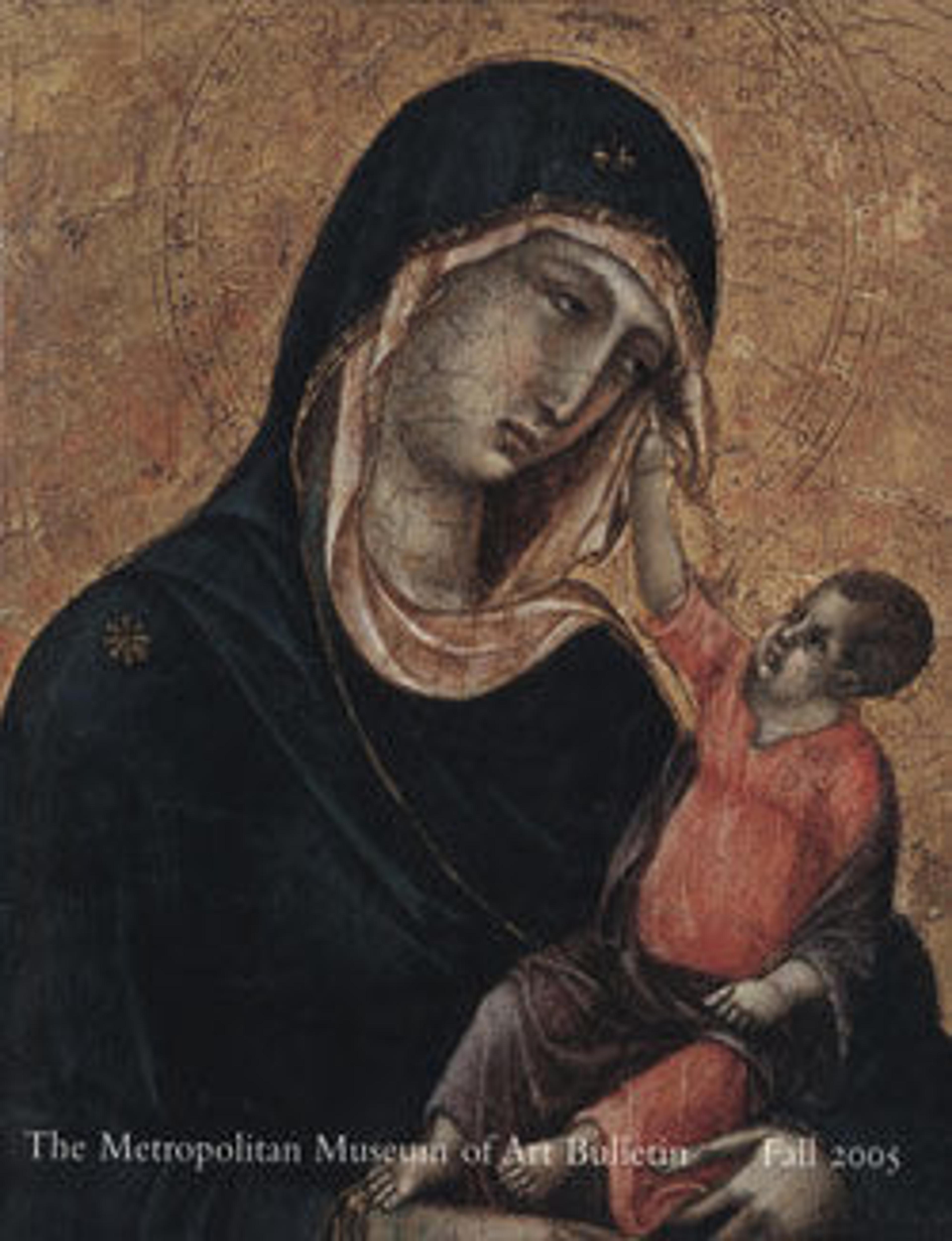[Self-Portrait with Christine and Yvonne Lerolle]
While Degas was aware of photography from the beginning of his career, he did not take up the medium until 1895, when he embraced it with great enthusiasm. By then, the motifs in his paintings and pastels-dancers, women at their toilette, horses, and even his rare forays into landscape-were established, as were his untraditional viewpoints, lighting effects, and compositions; what was novel was his approach to his materials. Characteristically, he eschewed the accepted standards of photographic practice, the decreed fashions of the portrait studio, and the aesthetics of the "Photo-Club" artist; instead, his technique was driven exclusively by the effect he wished to achieve.
Degas's brief but passionate involvement with photography resulted in a small body of fascinating and engaging pictures. Most of his surviving photographs are figure studies, self-portraits, and portraits of his intimate circle of friends-the families of Ludovic Halévy, Stéphane Mallarmé, Henry Lerolle, Auguste Renoir, Jacques-Emile Blanche, and others-in settings suggestive of realms more psychological than physical. In this magical image-one of Degas's finest-the artist himself seems to lean back deep in thought, conjuring up an image of youthful feminine grace in the form of the white-clad Lerolle daughters.
Degas's brief but passionate involvement with photography resulted in a small body of fascinating and engaging pictures. Most of his surviving photographs are figure studies, self-portraits, and portraits of his intimate circle of friends-the families of Ludovic Halévy, Stéphane Mallarmé, Henry Lerolle, Auguste Renoir, Jacques-Emile Blanche, and others-in settings suggestive of realms more psychological than physical. In this magical image-one of Degas's finest-the artist himself seems to lean back deep in thought, conjuring up an image of youthful feminine grace in the form of the white-clad Lerolle daughters.
Artwork Details
- Title:[Self-Portrait with Christine and Yvonne Lerolle]
- Artist:Edgar Degas (French, Paris 1834–1917 Paris)
- Date:probably 1895–96
- Medium:Gelatin silver print
- Dimensions:Image: 37.1 x 29.3 cm (14 5/8 x 11 9/16 in.)
Mount: 55.4 x 45.5 cm (21 13/16 x 17 15/16 in.) - Classification:Photographs
- Credit Line:Purchase, The Horace W. Goldsmith Foundation Gift, through Joyce and Robert Menschel and Rogers Fund, 2004
- Object Number:2004.335
- Curatorial Department: Photographs
More Artwork
Research Resources
The Met provides unparalleled resources for research and welcomes an international community of students and scholars. The Met's Open Access API is where creators and researchers can connect to the The Met collection. Open Access data and public domain images are available for unrestricted commercial and noncommercial use without permission or fee.
To request images under copyright and other restrictions, please use this Image Request form.
Feedback
We continue to research and examine historical and cultural context for objects in The Met collection. If you have comments or questions about this object record, please contact us using the form below. The Museum looks forward to receiving your comments.
